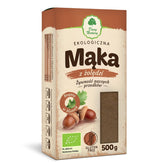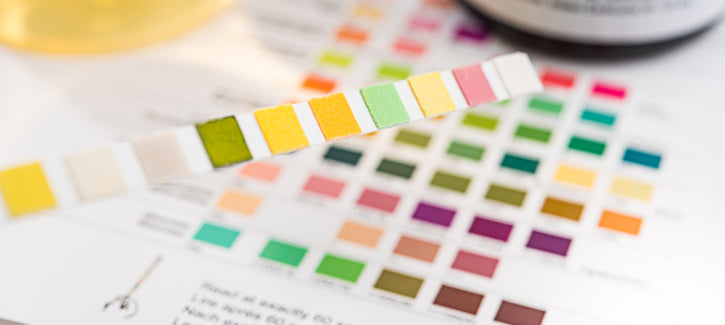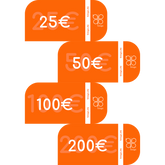Litmus papers - what and how to use them?
Acidosis is becoming an increasingly serious problem worldwide. It's primarily the result of an unhealthy diet—based on highly processed foods—as well as stress, fatigue, or smoking. If chronic, it can lead to serious health problems. Therefore, it's worth continuously monitoring your body's acidosis levels. Litmus paper can help with this. Learn more about what they are and how they're used.
Litmus papers , also called indicator papers, are small pieces of paper that have been soaked in a special solution of a chemical substance and then subjected to a drying process. They are used in this form. They are used to determine the pH value of the solution being tested. They can be used in many situations – not only to check your body's acidity, but also in plant cultivation or in various laboratory tests.
It's worth noting that classic pH litmus papers are now being replaced by universal papers—and these are the ones most often thought of when this name is used. And what's the difference? The answer to this question is very simple. Classic litmus papers came in three colors: red, blue, and purple. Each of them was de facto used to detect one of the reaction types: acidic or alkaline. However, universal papers currently in use can detect any of them.
The principle of litmus paper is simple: After being immersed in and removed from the test solution, the part of the paper impregnated with the indicator takes on a specific color. Using the legend, you can determine in seconds whether a solution is acidic or basic and what its pH value is.
How do you read litmus papers ?
Reading pH litmus papers requires neither a diagnostic laboratory nor advanced chemistry knowledge, regardless of the solution used to test them.
What does this process look like in practice?
- Remove the litmus paper from the packaging.
- Prepare the solution you want to test. For example, in the context of testing the body's acidity level, the test solution will be a urine sample.
- Dip the test part of the litmus strip into the solution for 1-2 seconds.
- Remove the paper and let it dry. Meanwhile, you'll notice the color of the test piece begin to change until it reaches its final color.
- Compare it to the scale on your litmus paper packet to see if you are dealing with an acidic, alkaline or neutral solution and to determine the exact pH value.
Remember that individual pH values affect whether the reaction is acidic or basic, and to what extent. And yes:
- pH below 7 means an acidic solution, of which 1-3 is very acidic and 4-6 is acidic,
- pH equal to 7 means neutral reaction,
- A pH value above 7 is alkaline, with values between 12 and 14 being considered strongly alkaline.
When using litmus paper to test your body's acidity, remember:
- The examination should be carried out around midday, approximately 1-2 hours after a meal,
- pH fluctuations - to obtain the most reliable result,
- If you have a lot of acidic results, it is worth consulting a doctor to get recommendations - e.g. regarding a change in diet.
Sometimes even small changes to your diet – for example, choosing organic and natural products – can make a big difference.
THE PUBLISHER'S CHOICE
Dried plums 1 kg BIOGO
- €7,01
- €7,01
- Unit price
- / per
Dried White Mulberries 500 g ORGANIC
- €5,84
- €5,84
- Unit price
- / per
Almonds 1 kg BIOGO
- €11,69
- €11,69
- Unit price
- / per
Cranberries sweetened with apple juice organic 1 kg BIOGO
- €16,37
- €16,37
- Unit price
- / per
Dried dates 1 kg BIOGO
- €4,21
- €4,21
- Unit price
- / per
Unpeeled buckwheat groats 1 kg BIOGO
- €2,81
- €2,81
- Unit price
- / per
Walnuts 800 g BIOGO
- €8,65
- €8,65
- Unit price
- / per
Peeled sunflower seeds 1 kg BIOGO
- €3,04
- €3,04
- Unit price
- / per
PULLED ORGANIC SUNFLOWER SEEDS 1 KG BIOGO
- €4,44
- €4,44
- Unit price
- / per












































































































































